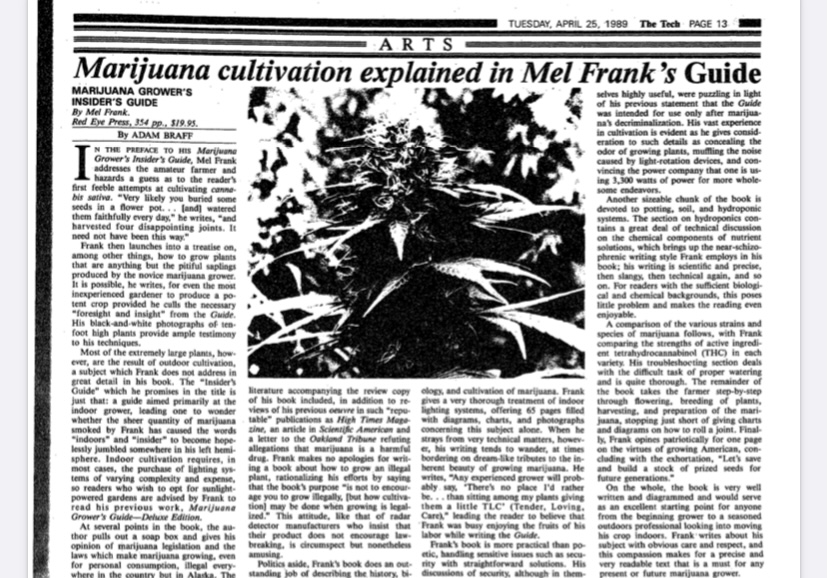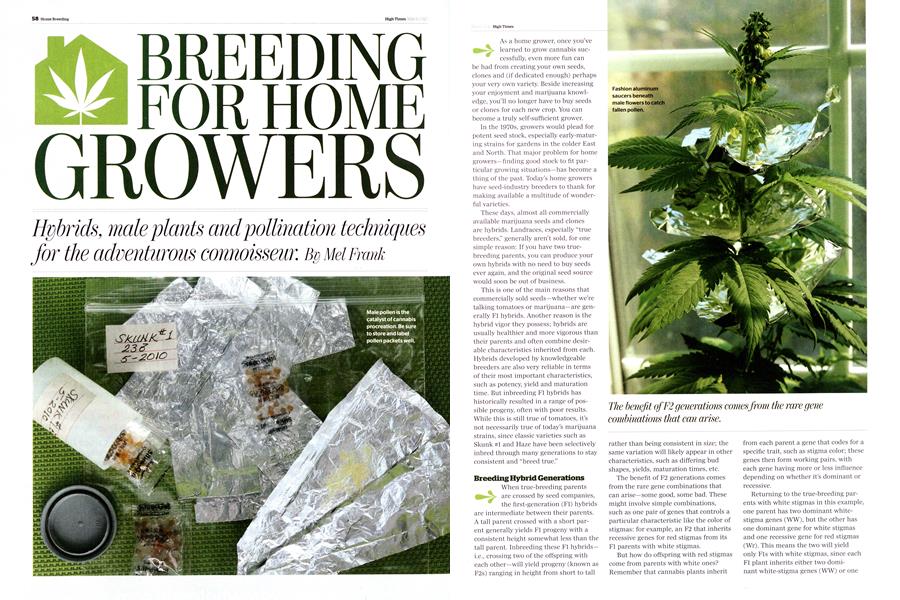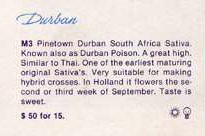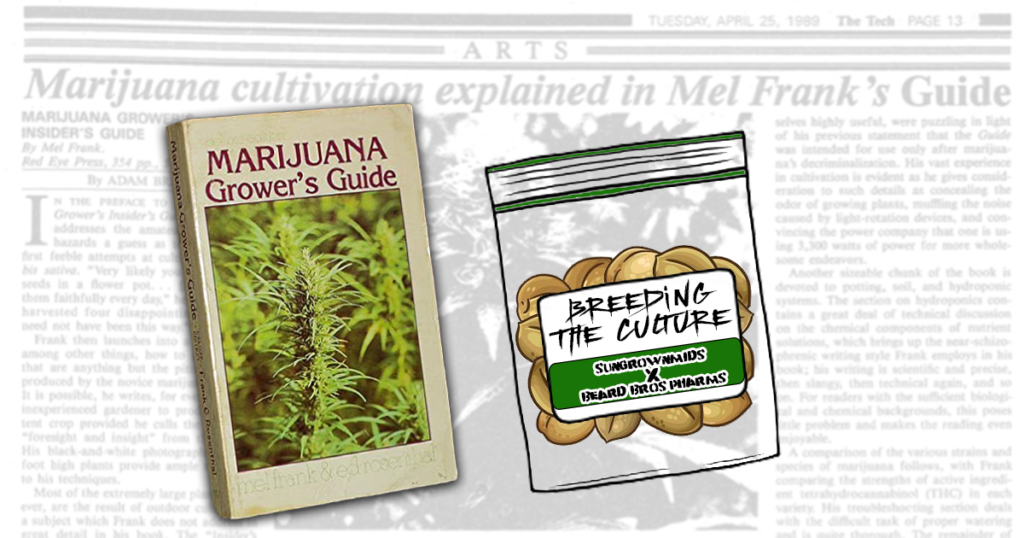 Mel Frank is the pen name of the author, photographer, grower, breeder, and cannabis pioneer James Goodwin.
Mel Frank is the pen name of the author, photographer, grower, breeder, and cannabis pioneer James Goodwin.
Mel wrote one of the first articles introducing people to growing cannabis in 1971 for the New York Flyer of Rolling Stone. Mel went on to co-author one of the first books explaining how to grow cannabis Marijuana Growers’ Indoor/Outdoor Guide with the help of Ed Rosenthal first published in 1974. This book sold over a million copies, receiving positive reviews in the NY Times, and MIT, and was later revised and expanded into the Deluxe Marijuana Growers Guide. Mel has also written numerous articles for publications ranging from Grow, High Times, Head, Red Eye, Skunk, and Cannabis Business Times.
For decades Mel has been at the forefront, photographing and documenting cannabis history in real-time. Mel has a collection of thousands of photographs. He was the first to capture color photographs of glandular trichomes using macro photography techniques that he developed himself. In 2018 Mel presented an exhibit of his photographs called We Were Criminals. Over the years Mel’s photographs have appeared in numerous books, magazines, collectibles, and art galleries.
In 1988 Mel Frank founded Red Eye Press which has published a number of classic cannabis-related books, including Robert Clarke’s seminal text Hashish on the history, traditions, and practices of Hashish-producing cultures around the world.
Through his work as an author, photographer, and publisher Mel has helped to introduce countless numbers of people to the science and art of cannabis horticulture and botany.
Beginning in the late-1960s Mel began collecting hundreds of varieties of imported cannabis genetics from many places of origin including Mexico, Cambodia, Thai

, Nigeria, Congo, Durban, Afghanistan, etc. from people whom he met here in the states. Throughout the 1970s Mel cultivated and bred these cannabis lines while putting himself through college and conducting extensive research to complete his book. In addition to collecting cannabis genetics, Mel also shared seeds from his collection with growers across the country. Photographs of his grows, as well as those of people with whom he shared genetics, show many of these classic imported varieties growing in different climate regions of California from the Bay Area, to Sonoma County, to Calaveras and El Dorado County, and the northeast from New York, to Massachusetts. Many of these photographs can be seen on his Instagram account @melfrank420.
 In 1977 Mel Frank was one of the first people to get samples of his cannabis tested for cannabinoid content at the US cannabis research facility at the University of Mississippi after Dr. Charlton Turner, then director of the research facility reached out to Mel and asked for samples to test. The results on many of the samples came back higher than anything they had previously tested.
In 1977 Mel Frank was one of the first people to get samples of his cannabis tested for cannabinoid content at the US cannabis research facility at the University of Mississippi after Dr. Charlton Turner, then director of the research facility reached out to Mel and asked for samples to test. The results on many of the samples came back higher than anything they had previously tested.
Mel’s most lasting legacy as a cannabis breeder is his work with the Afghani No.1 and the Durban Poison lines. Mel is responsible for the early breeding work that was done with these lines here in the states before they eventually made their way to Amsterdam in the mid-80s.
Mel originally sourced the Afghani No.1 in 1978. Mel has said that the Afghani No.1 line was selected primarily based on potency and early flowering traits. The line is a very uniform classic stout broad leaf drug variety with large, dense nug structure, and a musky, earthy, slightly berry terp profile. The Afghani No.1 was eventually brought to Amsterdam by David Watson and became a staple at Sensi Seeds, the Super Sativa Seed Club (M10).
The Afghani No.1 has been used in numerous lines by different breeders over the years, for instance, JJ of topdawgseeds started his Chem D backcross project by outcrossing the Chem D to the Sensi Seeds Afghani No.1, Coastal Seeds Crickets and Cicadas have worked with the SSSC m10 in recent years. Their Triangle Kush x M10 can be found in numerous breeders’ work including Swampboys MeyersCreekSeeds and Italfoundations.
 Mel is also responsible for breeding the Durban Poison line taken to Amsterdam by David Watson founding what became the staple Dutch Durban Poison line. According to Mel, he received the original Durban seeds from Ed Rosenthal who got them out of buds he bought at a coffee shop in Amsterdam. Mel selected and bred the Durban Poison for its potency and its exceptionally early flowering time outdoors. Mel selected two lines, an A and a B line. As Mel has recounted over the years he, unfortunately, gave Watson the less desirable B line by mistake. According to both Mel and Watson, this B line had some hermaphroditism that had bred out of the line before it was commercially viable, it was this line that made it to Amsterdam. The Durban was a fast flowering narrow-leaf drug variety originally known for its sweet anise terp profile.
Mel is also responsible for breeding the Durban Poison line taken to Amsterdam by David Watson founding what became the staple Dutch Durban Poison line. According to Mel, he received the original Durban seeds from Ed Rosenthal who got them out of buds he bought at a coffee shop in Amsterdam. Mel selected and bred the Durban Poison for its potency and its exceptionally early flowering time outdoors. Mel selected two lines, an A and a B line. As Mel has recounted over the years he, unfortunately, gave Watson the less desirable B line by mistake. According to both Mel and Watson, this B line had some hermaphroditism that had bred out of the line before it was commercially viable, it was this line that made it to Amsterdam. The Durban was a fast flowering narrow-leaf drug variety originally known for its sweet anise terp profile.
Mel’s Durban was featured in a number of seed catalogs in the 1980s from Sacred Seeds Cultivators’ Choice 1985 catalog where it appears as South African. In the late 80s, Nevil’s Seed Bank offered the Durban Poison, and later Sensi Seeds and Dutch Passions continued to produce seeds under this name. Mel’s Durban is still available on the commercial seed market, though the Dutch version no longer resembles its former glory, Authentic Genetics has offered pure Durban Poison from Mel’s seed stock (and other offerings from Mel).
Mel’s writings, photography, and publishing helped to inform and capture a generation of cannabis history in real-time as it unfolded through the height of prohibition. As a cannabis breeder, Mel helped to jump-start the international seed industry that emerged in Holland in the mid-80s. Mel is one of a handful of people who have documented and preserved original records of this time period. Mel Frank is someone to whom we all owe an enormous debt of gratitude and thanks.
_____________
READ THE FULL BREEDING THE CULTURE SERIES HERE
Most Popular News Posts
- Glassblowing is Not a Crime But That Wasn’t Always the Case – A Look Back at Operation Pipe Dreams
- A Brief 50,000 Year History of Our Relationship with Psilocybin Mushrooms
- How to Middleman a Goddamn Motherf*ckin’ Hemp Biomass Deal
- Study Uncovers Traces of Xanax in 72% of Blood Samples Yet We Still Have to Fight For Cannabis Rights





